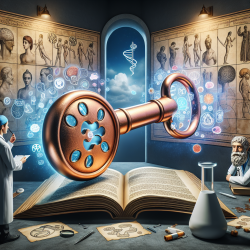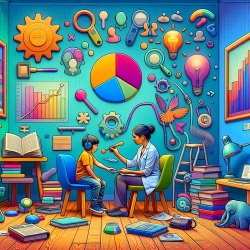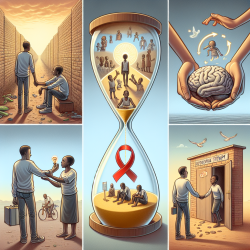Introduction
Have you ever wondered what it would be like to diagnose a famous historical figure? Retrospective diagnosis is a fascinating field that merges history, medicine, and ethics to provide insights into the lives of those who have shaped our world. In this blog, we'll explore the research presented in the article "Retrospective diagnosis of a famous historical figure: ontological, epistemic, and ethical considerations" by Osamu Muramoto, and discuss how you, as a practitioner, can use these insights to enhance your practice.
The Art and Science of Retrospective Diagnosis
Retrospective diagnosis involves diagnosing medical conditions of historical figures based on evidence found in documents, art, and other artifacts. This practice is not without its challenges, as it raises ontological and epistemic questions about the persistence and verification of diseases over time. However, it also offers a unique opportunity to understand the influence of diseases on the works and behaviors of historical figures.
Why Practitioners Should Care
For practitioners, retrospective diagnosis can provide valuable lessons in hypothesis construction and interdisciplinary collaboration. By examining the lives of historical figures through a medical lens, practitioners can gain a deeper understanding of how diseases were perceived and treated in the past. This knowledge can inform modern practices and encourage a more holistic approach to diagnosis and treatment.
Implementing Insights in Practice
Here are some practical ways to incorporate the insights from retrospective diagnosis into your practice:
- Hypothesis Construction: Use retrospective diagnosis as a tool to refine your hypothesis-making skills. Consider how historical context and available evidence can inform your diagnostic process.
- Interdisciplinary Collaboration: Engage with professionals from other fields, such as historians and ethicists, to gain a broader perspective on diagnosis and treatment.
- Ethical Considerations: Reflect on the ethical implications of diagnosis, both in historical and contemporary contexts. Consider how your diagnostic decisions impact patients and their families.
Encouraging Further Research
Retrospective diagnosis is a field ripe for exploration. By delving into the lives of historical figures, practitioners can uncover new insights and challenge existing assumptions about disease and diagnosis. This research can also inspire new methodologies and approaches in modern medical practice.
Conclusion
Retrospective diagnosis offers a unique opportunity to bridge the gap between history and medicine. By understanding the ontological, epistemic, and ethical considerations involved, practitioners can enhance their diagnostic skills and contribute to a more nuanced understanding of medical history. To read the original research paper, please follow this link: Retrospective diagnosis of a famous historical figure: ontological, epistemic, and ethical considerations.










